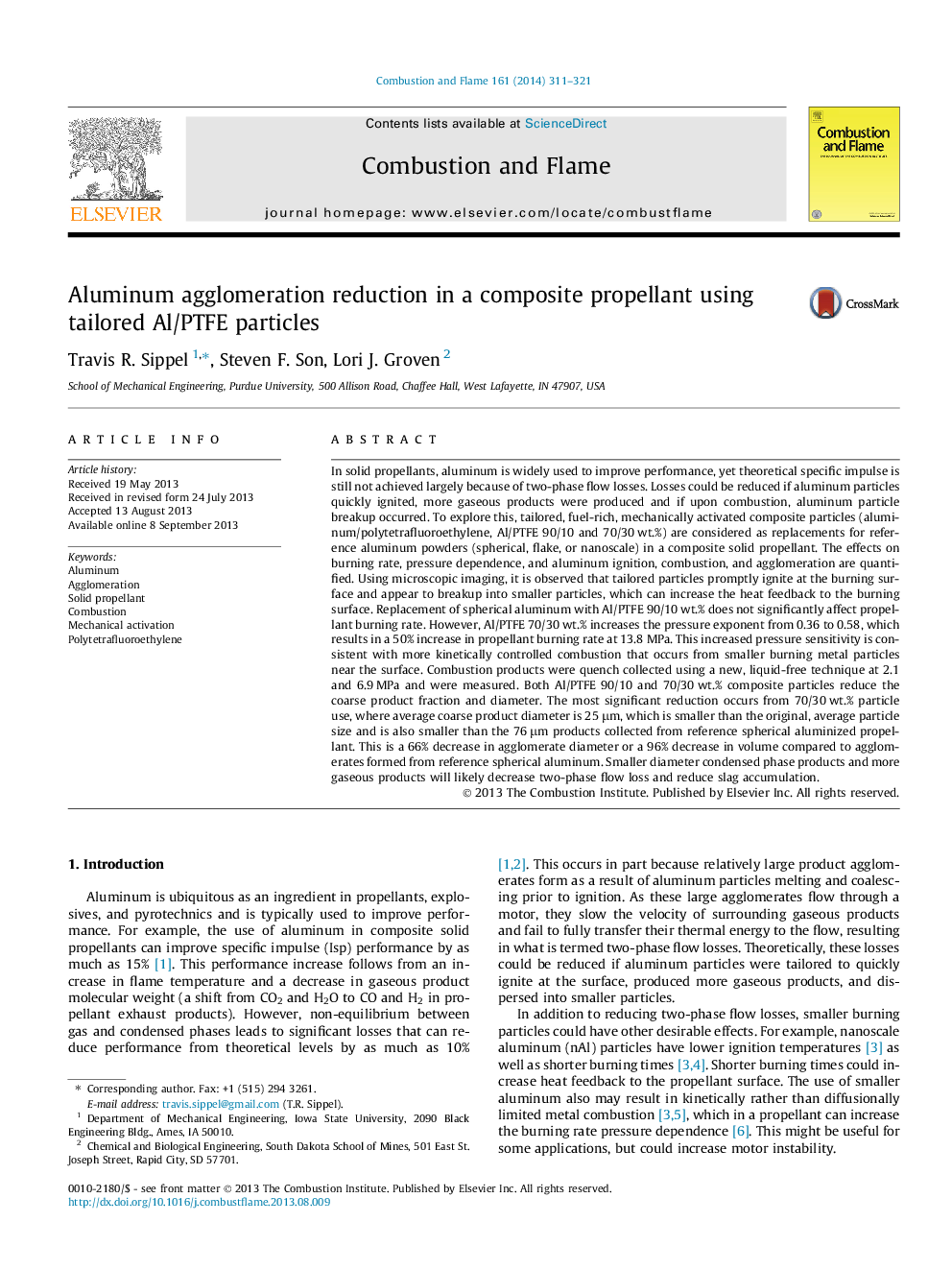| کد مقاله | کد نشریه | سال انتشار | مقاله انگلیسی | نسخه تمام متن |
|---|---|---|---|---|
| 168814 | 457954 | 2014 | 11 صفحه PDF | دانلود رایگان |

In solid propellants, aluminum is widely used to improve performance, yet theoretical specific impulse is still not achieved largely because of two-phase flow losses. Losses could be reduced if aluminum particles quickly ignited, more gaseous products were produced and if upon combustion, aluminum particle breakup occurred. To explore this, tailored, fuel-rich, mechanically activated composite particles (aluminum/polytetrafluoroethylene, Al/PTFE 90/10 and 70/30 wt.%) are considered as replacements for reference aluminum powders (spherical, flake, or nanoscale) in a composite solid propellant. The effects on burning rate, pressure dependence, and aluminum ignition, combustion, and agglomeration are quantified. Using microscopic imaging, it is observed that tailored particles promptly ignite at the burning surface and appear to breakup into smaller particles, which can increase the heat feedback to the burning surface. Replacement of spherical aluminum with Al/PTFE 90/10 wt.% does not significantly affect propellant burning rate. However, Al/PTFE 70/30 wt.% increases the pressure exponent from 0.36 to 0.58, which results in a 50% increase in propellant burning rate at 13.8 MPa. This increased pressure sensitivity is consistent with more kinetically controlled combustion that occurs from smaller burning metal particles near the surface. Combustion products were quench collected using a new, liquid-free technique at 2.1 and 6.9 MPa and were measured. Both Al/PTFE 90/10 and 70/30 wt.% composite particles reduce the coarse product fraction and diameter. The most significant reduction occurs from 70/30 wt.% particle use, where average coarse product diameter is 25 μm, which is smaller than the original, average particle size and is also smaller than the 76 μm products collected from reference spherical aluminized propellant. This is a 66% decrease in agglomerate diameter or a 96% decrease in volume compared to agglomerates formed from reference spherical aluminum. Smaller diameter condensed phase products and more gaseous products will likely decrease two-phase flow loss and reduce slag accumulation.
Journal: Combustion and Flame - Volume 161, Issue 1, January 2014, Pages 311–321